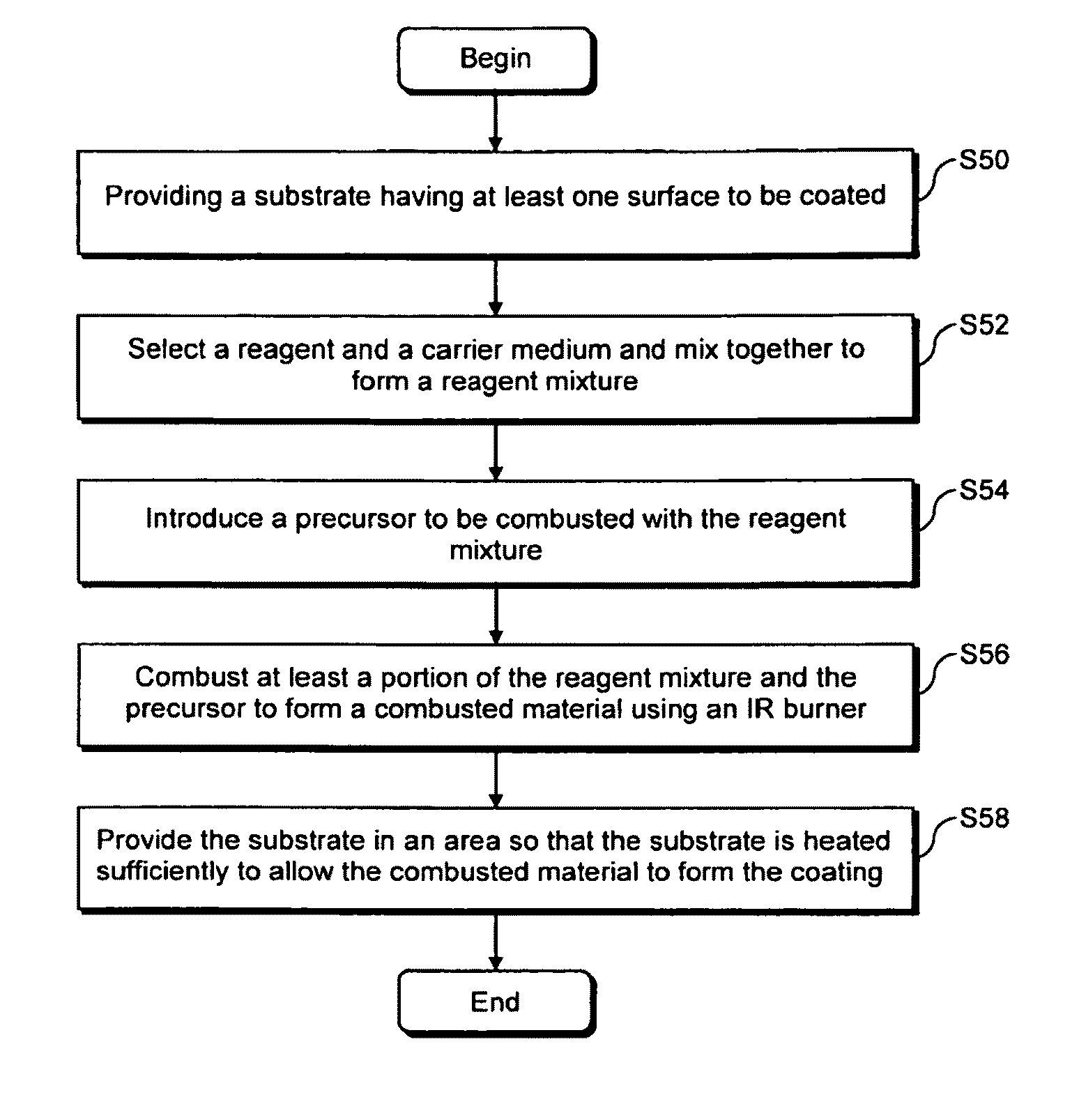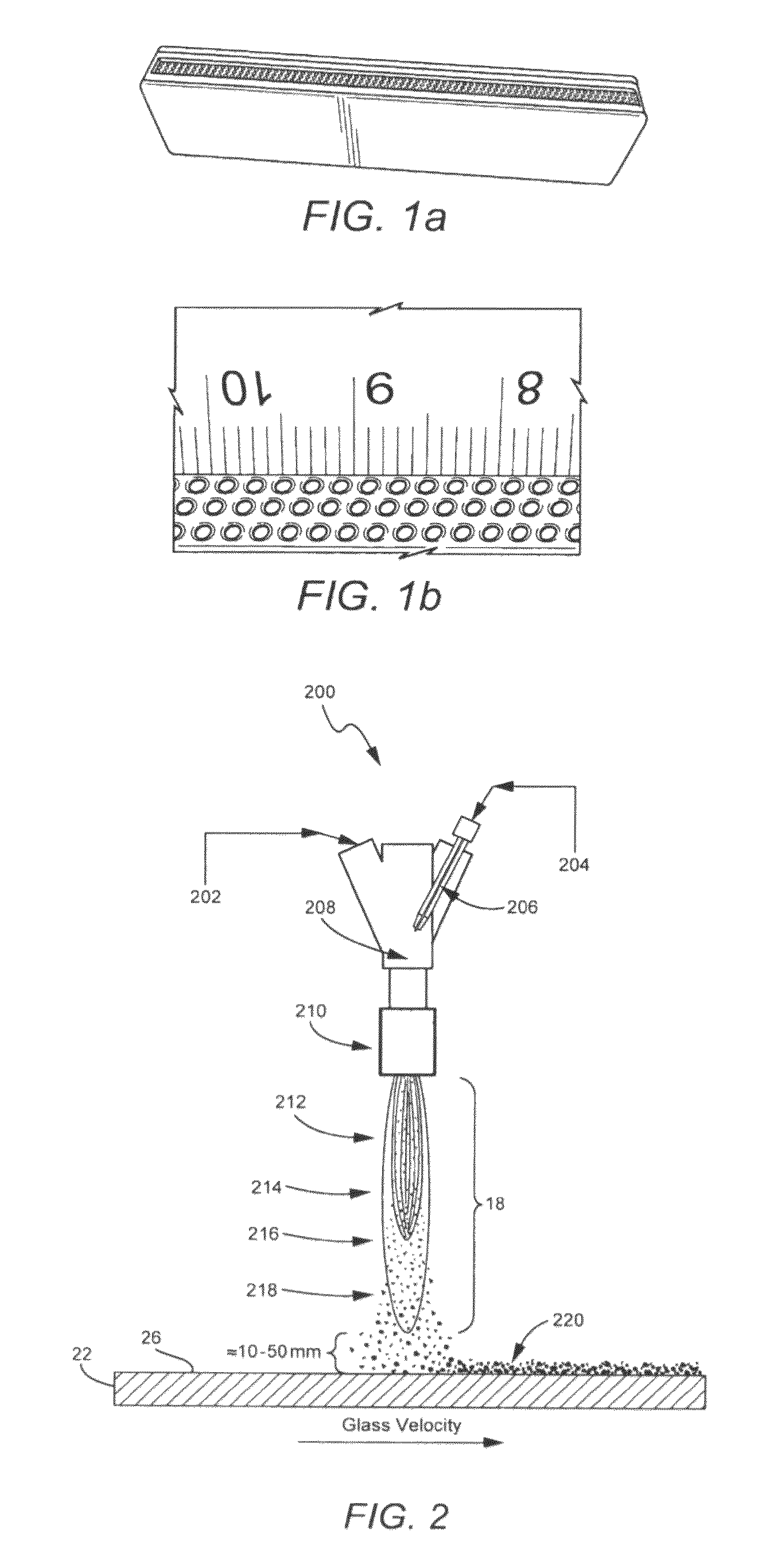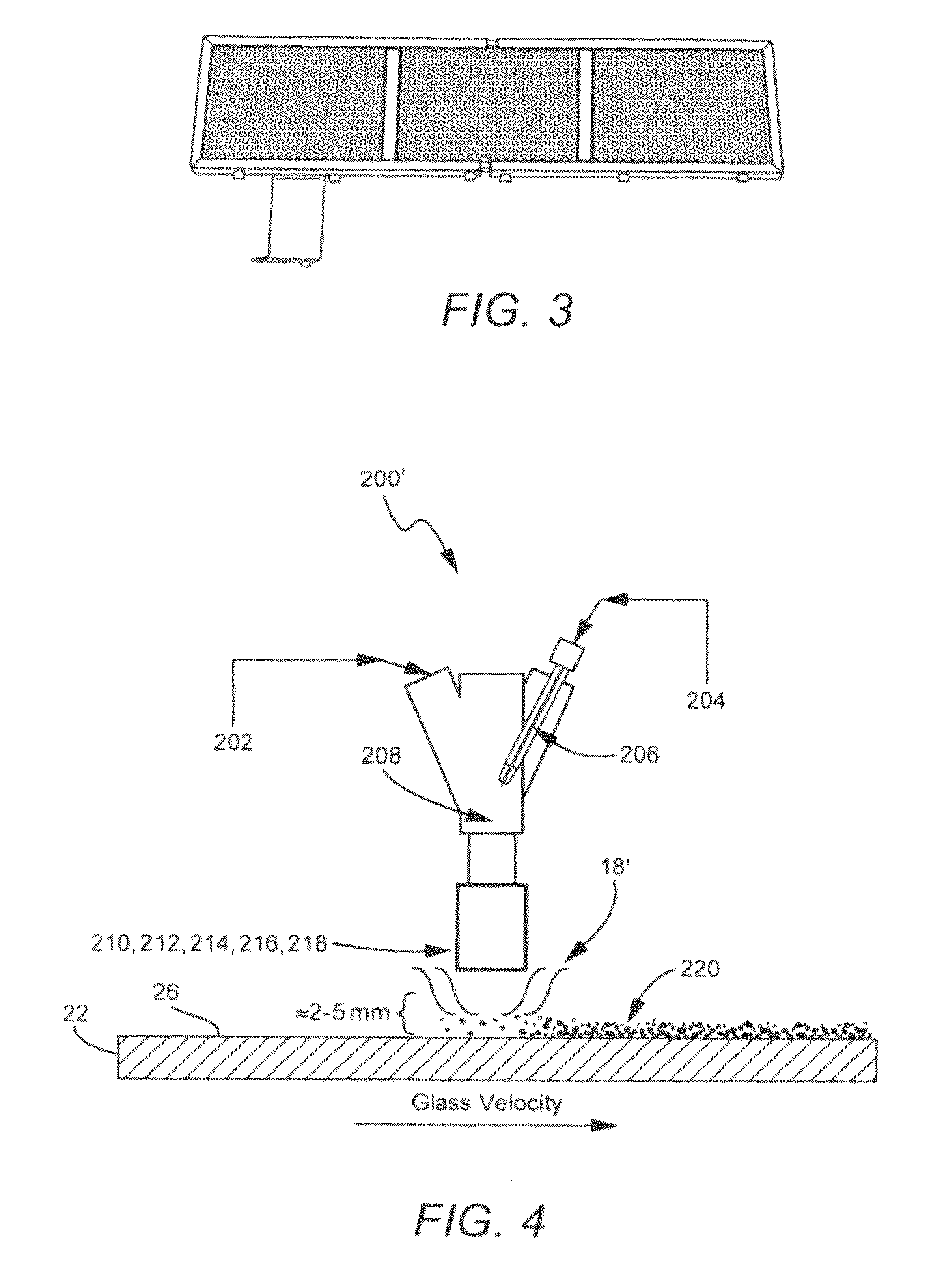Remote combustion deposition burner and/or related methods
a burner and combustion technology, applied in the direction of combustion types, lighting and heating apparatuses, solid-state diffusion coatings, etc., can solve the problems of significant increase in substrate temperature, stress change in glass, and limited control mechanisms, so as to reduce fuel consumption, reduce heat flux to the substrate, and enhance reaction control
- Summary
- Abstract
- Description
- Claims
- Application Information
AI Technical Summary
Benefits of technology
Problems solved by technology
Method used
Image
Examples
Embodiment Construction
[0036]In certain example embodiments of this invention, a method of forming a coating on a glass substrate using combustion deposition is provided. A glass substrate having at least one surface to be coated is provided. A reagent and an optional carrier medium are selected, and the reagent and the carrier medium are mixed together to form a reagent mixture. The reagent is selected such that at least a portion of the reagent is used in forming the coating. A precursor to be combusted with the reagent mixture is introduced. Using at least one infrared burner, at least a portion of the reagent mixture and the precursor are combusted to form a combusted material, with the combusted material comprising non-vaporized material. The glass substrate is provided in an area so that the glass substrate is heated sufficiently to allow the combusted material to form the coating, directly or indirectly, on the glass substrate. The coating may be applied in a substantially uniform manner (e.g., acr...
PUM
| Property | Measurement | Unit |
|---|---|---|
| distance | aaaaa | aaaaa |
| wavelengths | aaaaa | aaaaa |
| distance | aaaaa | aaaaa |
Abstract
Description
Claims
Application Information
 Login to View More
Login to View More - R&D
- Intellectual Property
- Life Sciences
- Materials
- Tech Scout
- Unparalleled Data Quality
- Higher Quality Content
- 60% Fewer Hallucinations
Browse by: Latest US Patents, China's latest patents, Technical Efficacy Thesaurus, Application Domain, Technology Topic, Popular Technical Reports.
© 2025 PatSnap. All rights reserved.Legal|Privacy policy|Modern Slavery Act Transparency Statement|Sitemap|About US| Contact US: help@patsnap.com



